No Final Victories – Lessons from President Nixon’s Drug Abuse Initiatives
May 4th, 2018
In response to the rising urban upheaval and drug abuse of the 1960s, President Nixon initiated a two-pronged effort to curb both the supply and demand of narcotics within the United States. First, he created America’s first Drug Czar and centralized authority within the Executive Branch to initiate programs addressing drug abuse education, treatment, rehabilitation and research. Second, he enabled law enforcement with the tools to disrupt drug cartels, increased border interdiction and pursued complimentary international diplomatic initiatives. Featuring a panel of officials from the era, this forum addresses the shifts in focus that produced dramatically positive results, but no final victories in America’s “War on Drugs.”
Panelists
John Coleman: Beginning his career as a street level undercover agent in New York City, Mr. Coleman climbed the regional ranks until joining the newly created Drug Enforcement Administration (DEA). Serving the DEA for 32 years, Mr. Coleman for a time occupied the third highest position within the organization, Assistant Administrator for Operations. In addition, he gained extensive executive and policy making experience at the uppermost levels of government service, occupying the highest rank (SES-06) as a Federal Executive Service Senior. Mr. Coleman is currently President of the Board of Directors of Drug Watch International.
Jeffrey Donfeld: Mr. Donfeld joined the White House staff in 1969 serving as Staff Assistant to the President. Co-authoring the legislation that created the Special Action Office for Drug Abuse Prevention (SAODAP), he would later become the Assistant Director of SAODAP in 1971. Mr. Donfeld then became the Director of the Office of Hearings and Appeals in the Department of Interior. Returning to Los Angeles, he became a founding partner for the firm Donfeld, Kelley & Rollman, where he currently practices law in various capacities.
Dr. Robert DuPont: Earning his M.D. from the Harvard Medical School in 1963, Mr. DuPont began working for the District of Colombia Department of Corrections before transferring to the DC Narcotics Treatment Administration in 1970. Upon its creation, he became the first Director of the National Institute on Drug Abuse (NIDA) and the second White House Drug Czar. He currently maintains a psychiatric practice in Maryland which focuses on addiction and anxiety disorders.
Geoff Shepard (Moderator): Mr. Shepard was a White House Fellow at the U.S. Department of Treasury, and went on to serve as Staff Assistant to President Nixon and then as Associate Director for General Government on the White House Domestic Council. A recently retired lawyer in the insurance industry, he now coordinates the Richard Nixon Legacy Forums, jointly sponsored by the Nixon Foundation and National Archives.
Timeline (With Links To Primary Documents)
1968
September 16th – Candidate Nixon Speaking on Drug Abuse in Anaheim, CA (Richard Nixon Presidential Library, PPS 208, Box 93)
1969
July 14 – President Nixon’s Special Message to Congress on Control of Narcotics and Dangerous Drugs (Richard Nixon Presidential Library, White House Central Files, Subject: Speech, Box 40)
September 18 – Memo, Domestic Adviser Daniel Patrick Moynihan to Attorney General John Mitchell (Richard Nixon Presidential Library, National Security Council Files, Box 357)
October 23 – Bipartisan Leadership Meeting on Narcotics and Dangerous Drugs (The American Presidency Project)
1970
February 26 – President Nixon Meets with French President George Pompidou to Discuss the Heroin Epidemic (Richard Nixon Presidential Library, National Security Council Files, Box 916)
March 11 – President Nixon’s Statement Announcing an Expanded Federal Program To Combat Drug Abuse (The American Presidency Project)
April 28 – Proclamation 3981 – Drug Abuse Prevention Week (The American Presidency Project)
May 3 – Memo, Domestic Council Adviser John Ehrlichman to President Nixon Regarding Progress in Franco-American Narcotics Cooperation (Richard Nixon Presidential Library, National Security Council Files, Box 357)
August 3 – President Nixon speaks to Reporters in Denver, CO (The American Presidency Project)
September 29 – Memo, Jeff Donfled to Bud Krogh re: Nationwide Rehabilitation Program (Richard Nixon Presidential Library, White House Central Files, Staff: Jeff Donfeld, Box 30)
October 14 – President Nixon’s Remarks at the White House Conference on Drug Abuse (The American Presidency Project)
Handwritten Notes From White House Conference on Drugs (Richard Nixon Presidential Library, President’s Personal Files, Box 61)
October 27 – Comprehensive Drug Abuse Prevention and Control Act of 1970 (The American Presidency Project)
Handwritten Notes From Comprehensive Drug Abuse Prevention and Control Act of 1970 (Richard Nixon Presidential Library, President’s Personal Files, Box 62)
1971
June 16 – Handwritten Notes on Drug Abuse Prevention (Richard Nixon Presidential Library, President’s Personal Files, Box 67)
June 17 – President Nixon’s Special Message to Congress on Drug Abuse Prevention and Control (Richard Nixon Presidential Library, White House Central Files, Subject Files: Speech, Box 73)
Executive Order 11599 – Establishing a Special Action Office for Drug Abuse Prevention (The American Presidency Project)
Jerome Jaffe Appointed as First “Drug Czar” (Richard Nixon Presidential Library, White House Central Files, Subject Files: Speech, Box 73)
White House Press Conference (Richard Nixon Presidential Library, White House Central Files, Staff: Jeff Donfeld, Box 34)
September 7 – President Nixon announces the creation of the Cabinet Committee for International Narcotics Control (The American Presidency Project)
1972
January 28 – Executive Order 11641 – Establishes Office of Drug Abuse Law Enforcement within the Executive Office of the President (The American Presidency Project
President Nixon’s Statement on Establishing the Office for Drug Abuse Law Enforcement (The American Presidency Project)
February 3 – President Nixon’s Remarks to Athletes Attending a White House Sponsored Conference on Drug Abuse (The American Presidency Project)
March 20 – New York Meeting of Drug Enforcement Officials (Richard Nixon Presidential Library, President’s Personal Files, Box 73)
March 21 – President Nixon’s Statement About the Drug Abuse office and Treatment Act of 1972 (The American Presidency Project)
May 2 – President Nixon’s TV Address on the Efforts to Combat Drug Abuse (Richard Nixon Presidential Library, White House Special Files, Staff: Geoff Shepard, Box 1)
September 18 – President Nixon’s Address at the International Narcotics Control Conference in Washington D.C. (Richard Nixon Presidential Library, President’s Personal Files, Box 79)
October 15 – President Nixon’s Radio Address from Camp David on Crime and Drug Abuse (Richard Nixon Presidential Library, President’s Personal Files, Box 80)
October 28 – Campaign statement on Drug Abuse in Cleveland, OH (The American Presidency Project)
1973
March 14 – State of the Union Message to the Congress on Law Enforcement and Drug Abuse Prevention (The American Presidency Project)
July 6 – Executive Order 11727 – Drug Law Enforcement (The American Presidency Project)
1974
February 21 – President Nixon’s Special Message to Congress on Drug Abuse (Richard Nixon Presidential Library, White House Central Files, Subject Files: Speech, Box 94)
Fact Sheet Controlled Substances Trafficking Act of 1974 (Richard Nixon Presidential Library, White House Central Files, Subject Files: Speech, Box 94)
May 14 – President Nixon’s Statement on Signing the Narcotic Addict Treatment Act of 1974 (The American Presidency Project)
Undated
Ash Council Report (Richard Nixon Presidential Library, White House Central Files, Staff: Jeff Donfeld, Box 24)
Talking Points on International Aspects of Drug Problem (Richard Nixon Presidential Library, White House Central Files: Jeff Donfeld, Box 26)
Fact Sheet: Nixon Leads The Fight Against Drug Abuse (Richard Nixon Presidential Library, White House Special Files: Bud Krogh, Box 10)
“Drug Themes” (Richard Nixon Presidential Library, White House Central Files, Staff: Jeff Donfeld, Box 33)
Legacy Forum “Final Thoughts”
Jeffrey Donfeld – “The unproductive life blood of Washington bureaucracies is to protect one’s budgetary and programmatic turf. Such myopia prevents the federal government from focusing dollars and programs in a coordinated fashion. The architect of SAODAP recognized this structural deficiency in the federal governments non-law enforcement efforts to combat drug abuse horizontally within the federal government and vertically between the federal government and local jurisdictions. Credibility was achieved by President Nixon’s appointment of Dr. Jerome Jaffe, a Democrat, who was respected within the psychotherapy community. Metrics for the efficient use of the tax dollar was a mantra at SAODAP. Epidemiologic studies became important. Innovation based on data was a constant drill enhanced by the employment of ex NASA and OMB personnel. SAODAP quietly employed ex-addicts to assist in training government personnel who worked with addicts in the Veterans Administration and Department of Defense. Local jurisdictions were encouraged to divert addicts out of the criminal justice system into treatment programs. Those innovative approaches could only have originated from the top down as SAODAP had the backing of the White House. The introduction of methadone maintenance as a federally acceptable addiction treatment modality only occurred due to the support of the White House. While a common perception of the Nixon Administration was one of no none sense law enforcement, there was an unheralded compassionate and data oriented approach to education, treatment and research in an effort to reduce addiction in America.”
Dr. Robert DuPont – “President Nixon’s intense focus on drug policy sprang from several monumental challenges during his administration: 1) the heroin epidemic that produced many overdose deaths and a threatening epidemic of urban crime; 2) an explosion in 1970 of heroin use among American soldiers in Vietnam which threated troop function and public support for the war; and, 3) the disruptive increase in marijuana use by Americana youth. The years 1969 to 1974 – the Nixon presidency – were pivotal for American drug policy. Nixon elevated anti-drug efforts to the top of his Presidential agenda. He focused on the supply of heroin in particular.
On June 17, 1971 President Nixon established the position of Drug Czar, naming Jerome Jaffe, MD as Director of the Special Action Office for Drug Abuse Prevention (SAODAP). This was a dramatic departure from prior American drug policy because it elevated the nation’s demand reduction efforts – prevention, treatment and research – to balance the long-standing US commitment to a drug policy focused nearly exclusively on law enforcement (supply reduction). President Nixon responded to the modern drug abuse epidemic directly with sustained commitment and a wide range of responses that have set in motion for the nation’s efforts for the following five decades.”
Photographs
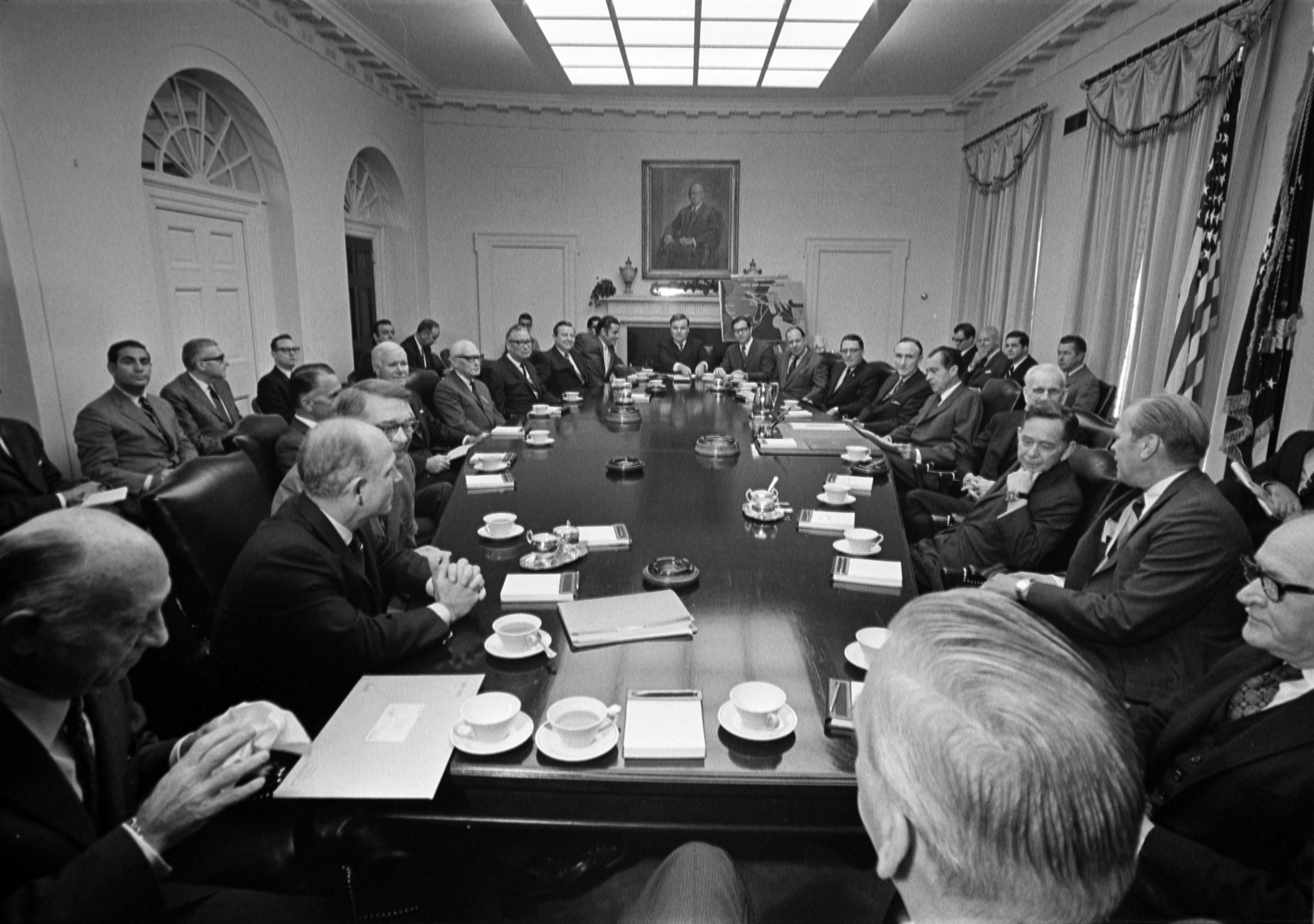
President Nixon hosts a meeting in the Cabinet Room with bipartisan Congressional leadership to discuss narcotics control and treatment issues (10/23/1969).
(Richard Nixon Presidential Library)
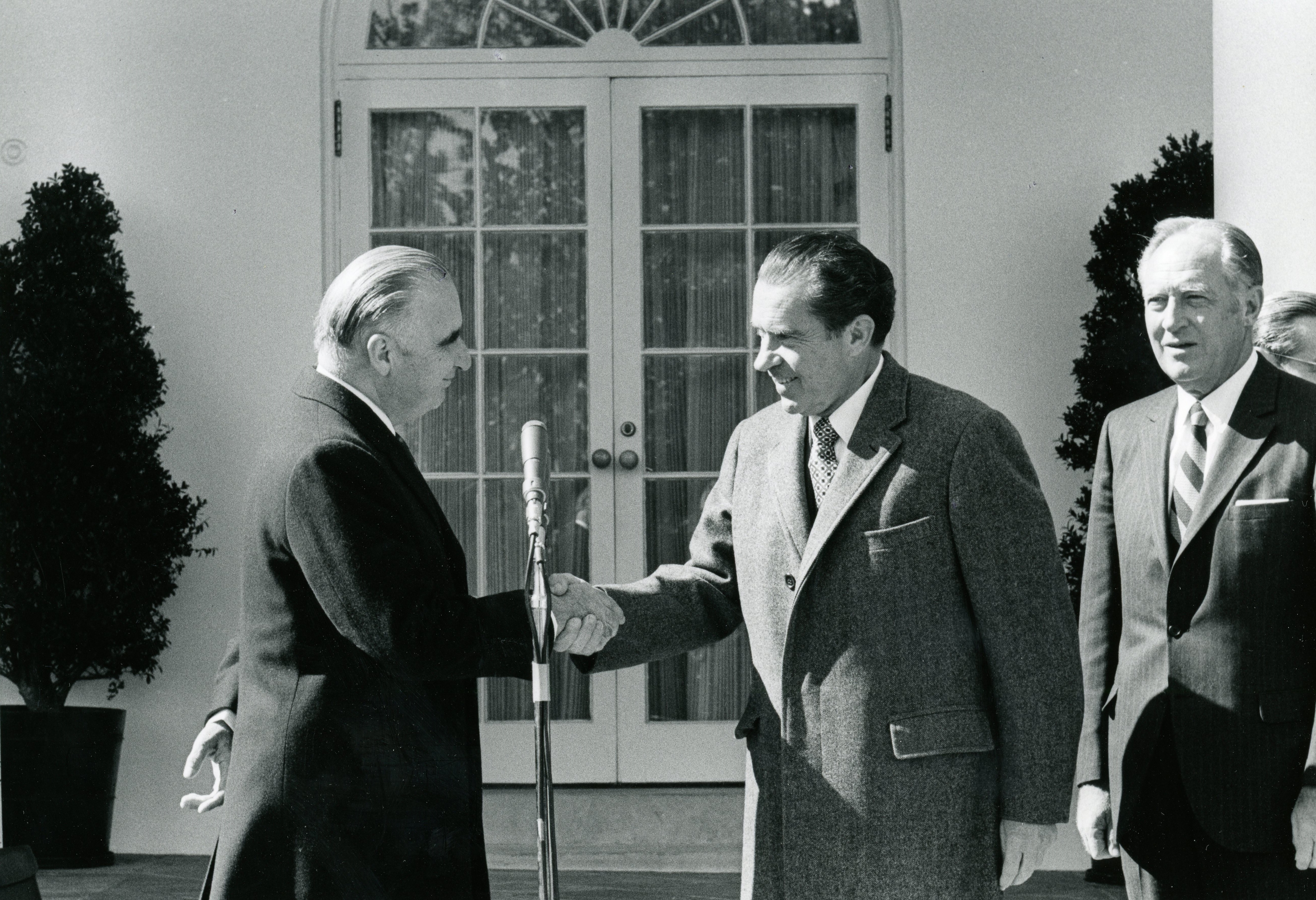
President Nixon shaking hands with French President Georges Pompidou at the steps of the White House Rose Garden, with Secretary of State William Rogers looking on (2/26/1970).
(Richard Nixon Presidential Library)
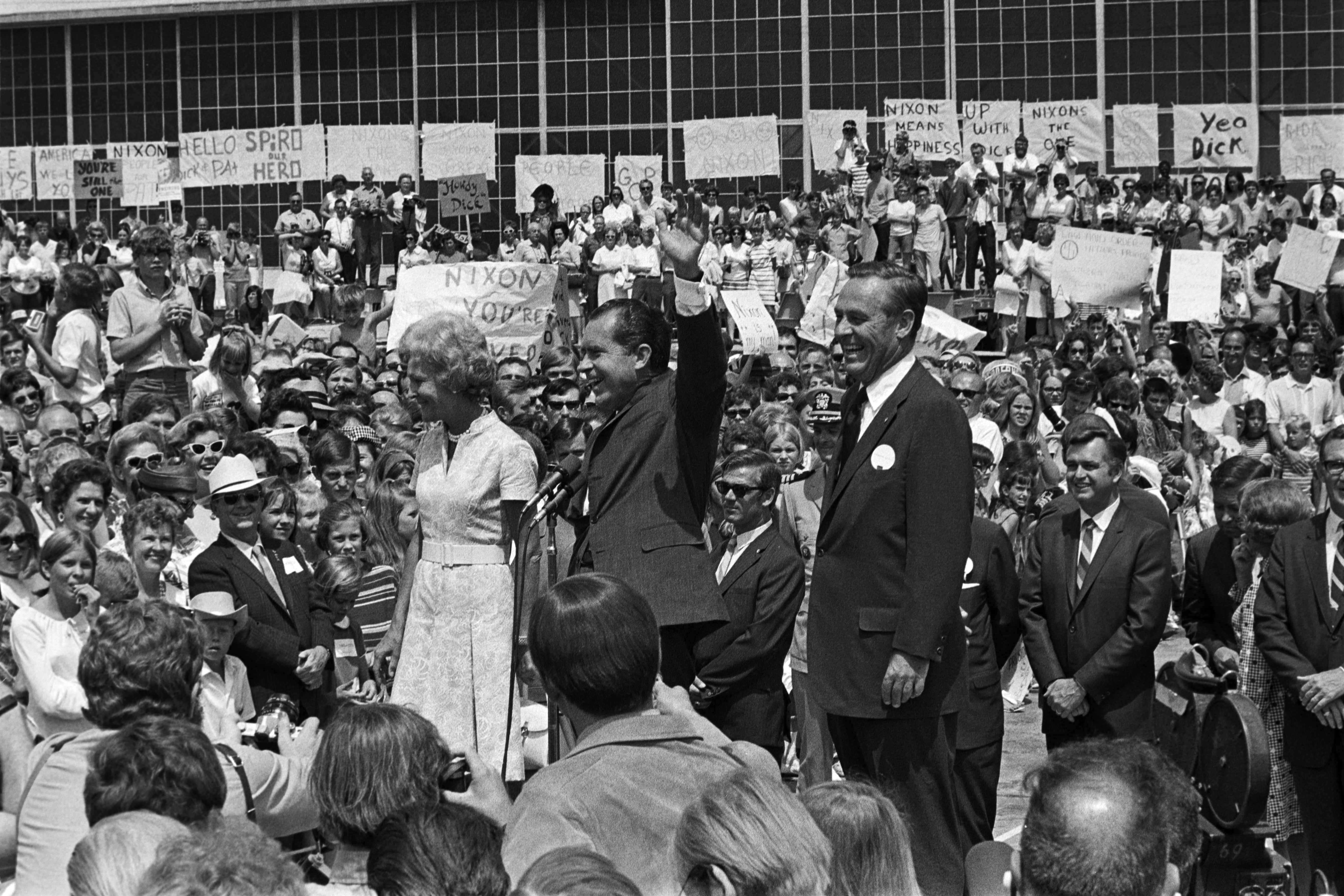
President and Mrs. Nixon greeting the crowd in Denver as they share the stage with law enforcement officials (8/3/1970).
(Richard Nixon Presidential Library)
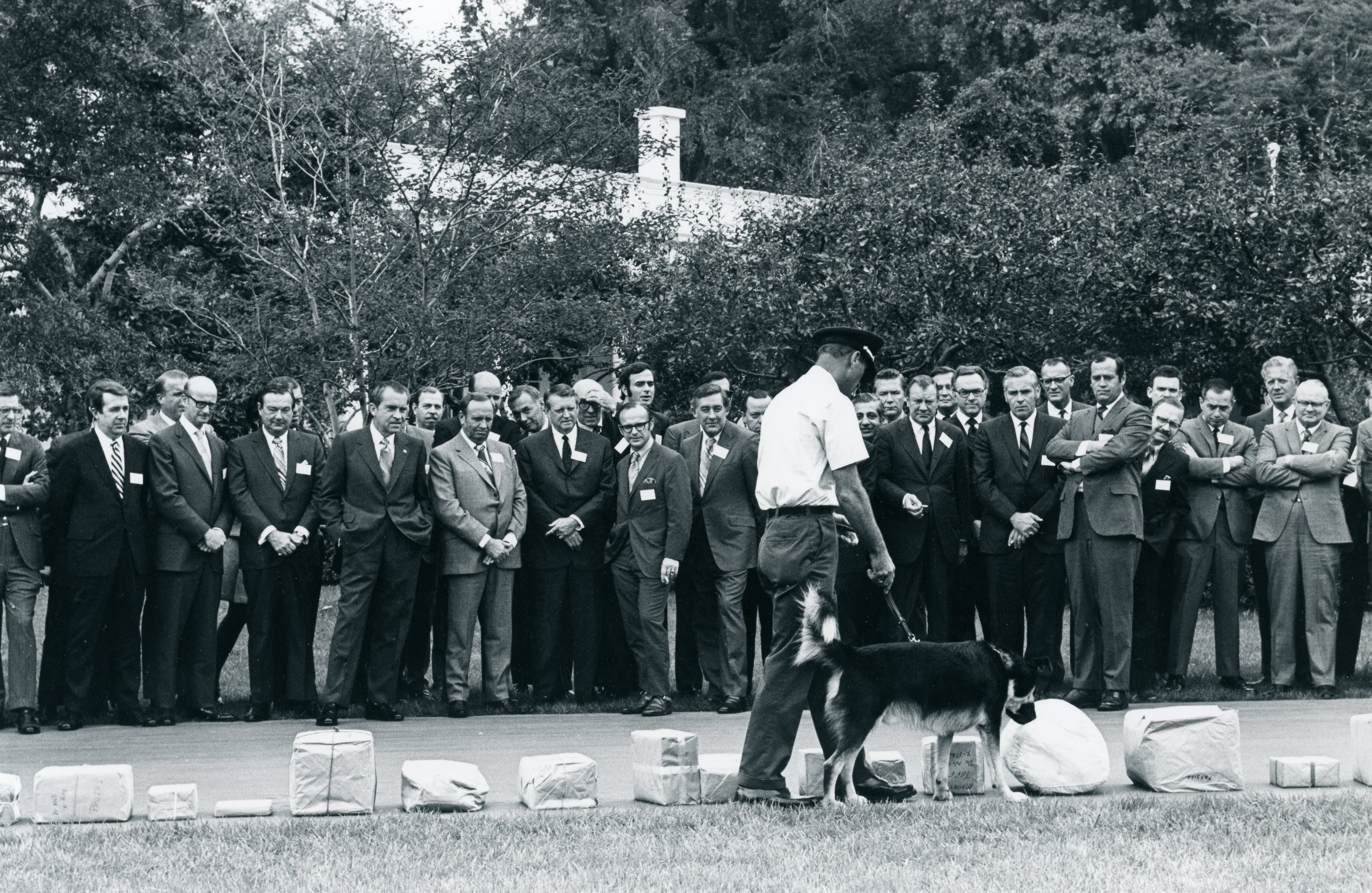
Drug sniffing police dog performs narcotic search demonstrations on the South Grounds of the White House during a conference on drug abuse. President Nixon and actor Gene Autry watch alongside other observers (10/14/1970).
(Richard Nixon Presidential Library)
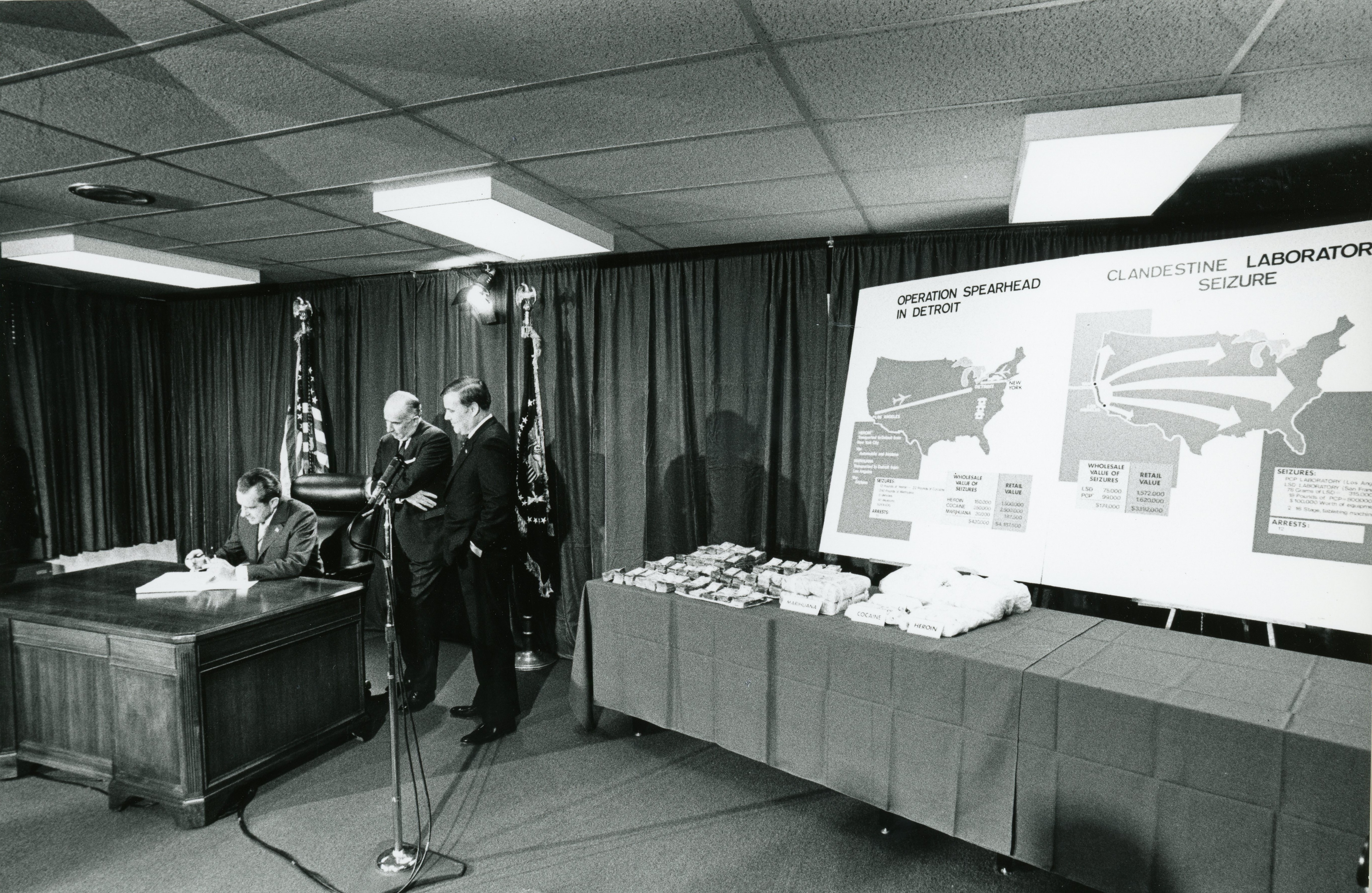
President Nixon signing the Comprehensive Drug Abuse, Prevention and Control Act of 1970 at the Department of Justice, while Attorney General John Mitchell and BNDD Director John Ingersoll look on (10/27/1970).
(Richard Nixon Presidential Library)
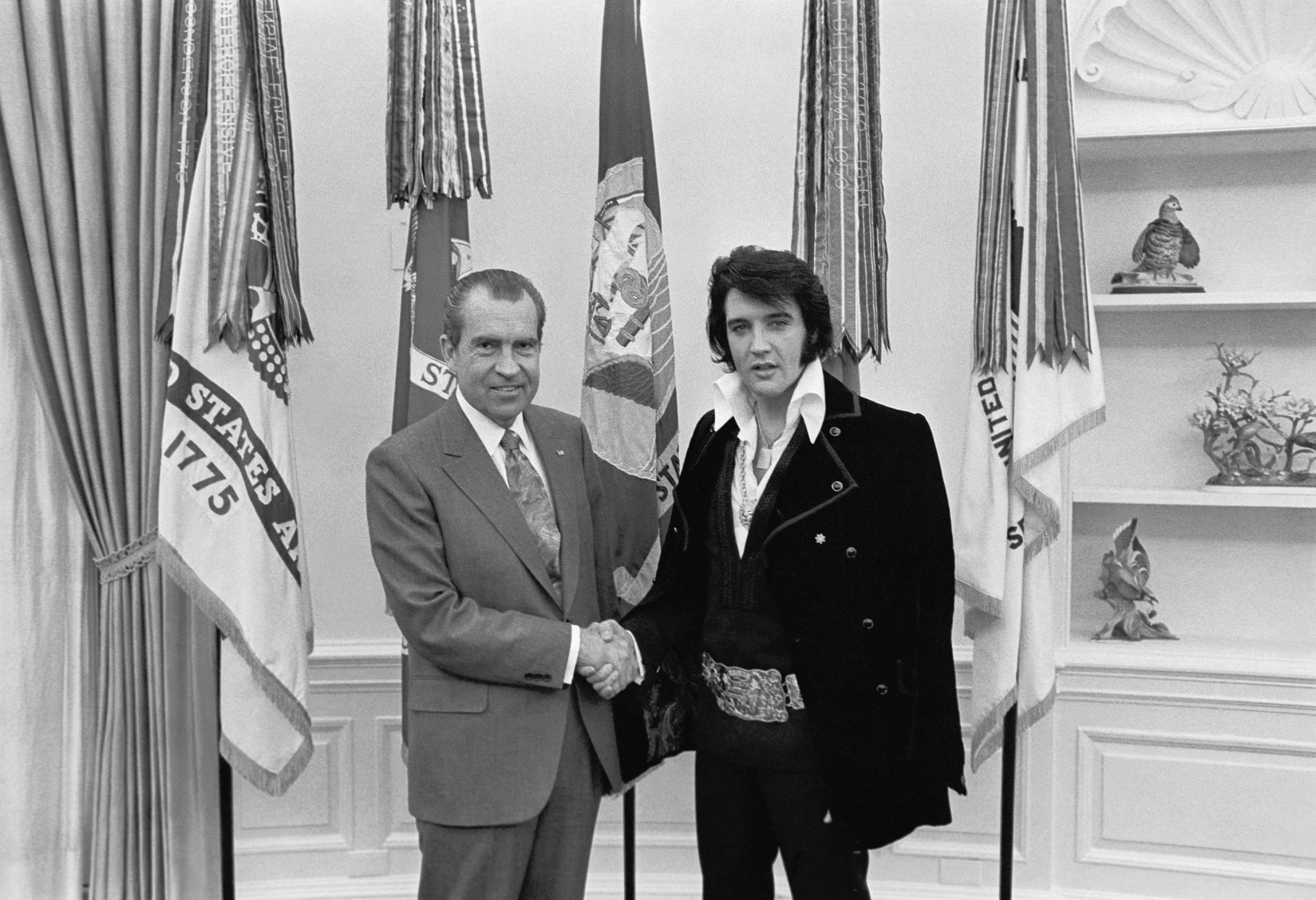
President Nixon and Elvis Presley shaking hands in the Oval Office (12/21/1970).
(Richard Nixon Presidential Library)
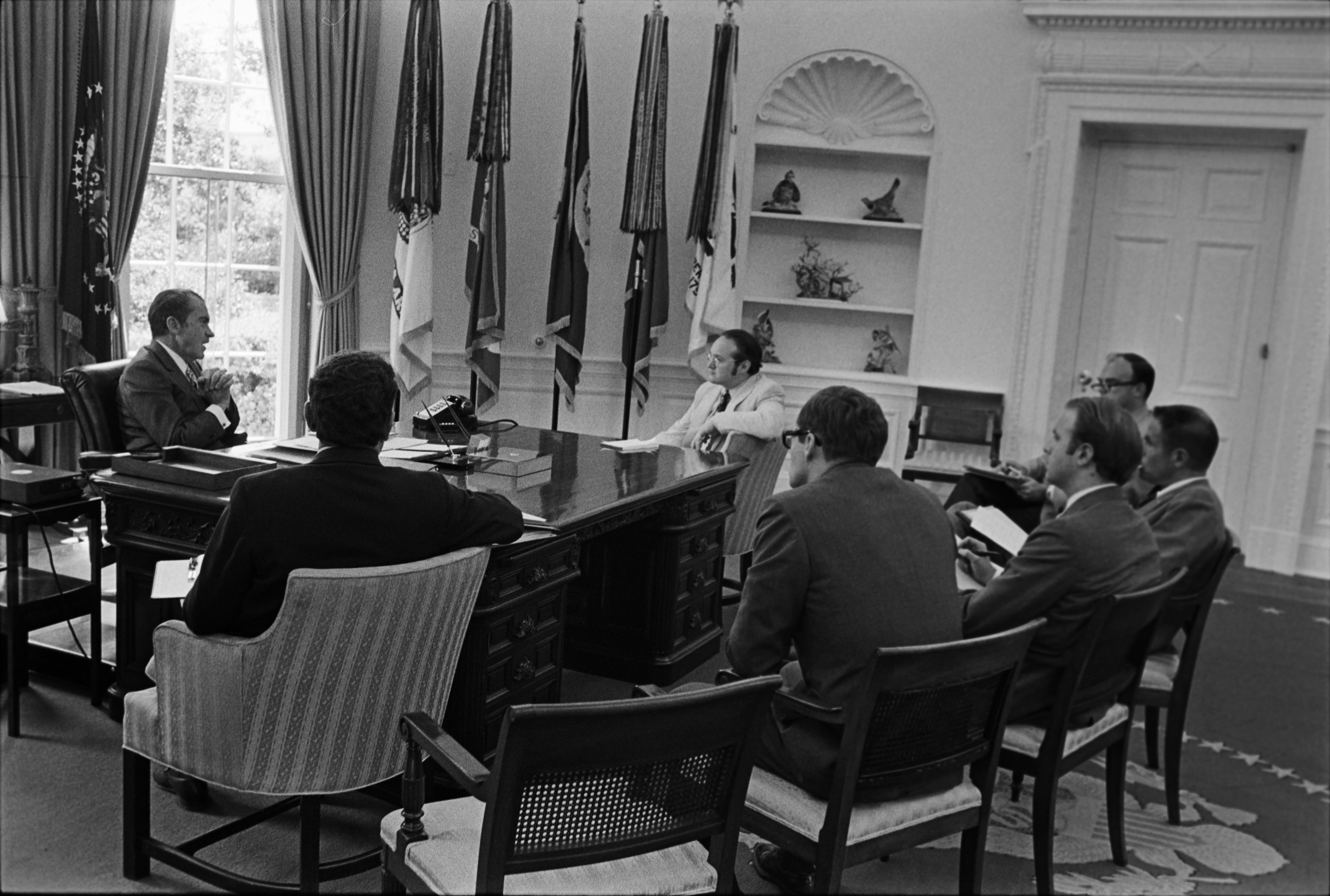
President Nixon hosts Oval Office meeting to discuss the methadone maintenance treatment initiative and the formation of SAODAP (6/10/1971).
Clockwise: President Nixon, Jerry Jaffe, John Ehrlichman, Bob Haldeman, Jeff Donfeld, Bud Krogh and Arnold Weber.
(Richard Nixon Presidential Library)
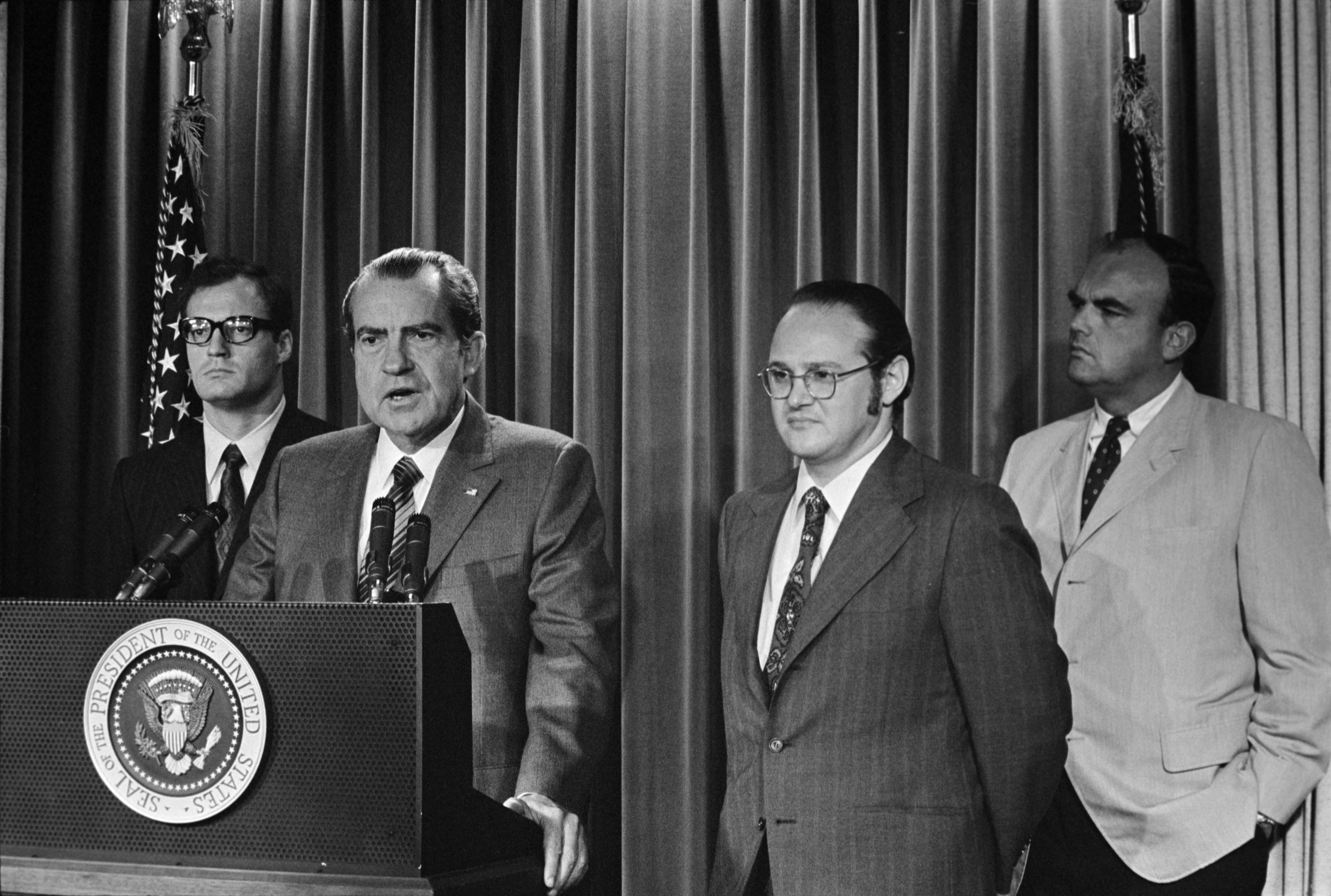
President Nixon in the Press Briefing Room, announcing his appointment of Jerry Jaffe as the Director of SAODAP (6/17/1971).
Left to right: Bud Krogh, President Nixon, Jerry Jaffe and John Ehrlichman
(Richard Nixon Presidential Library)
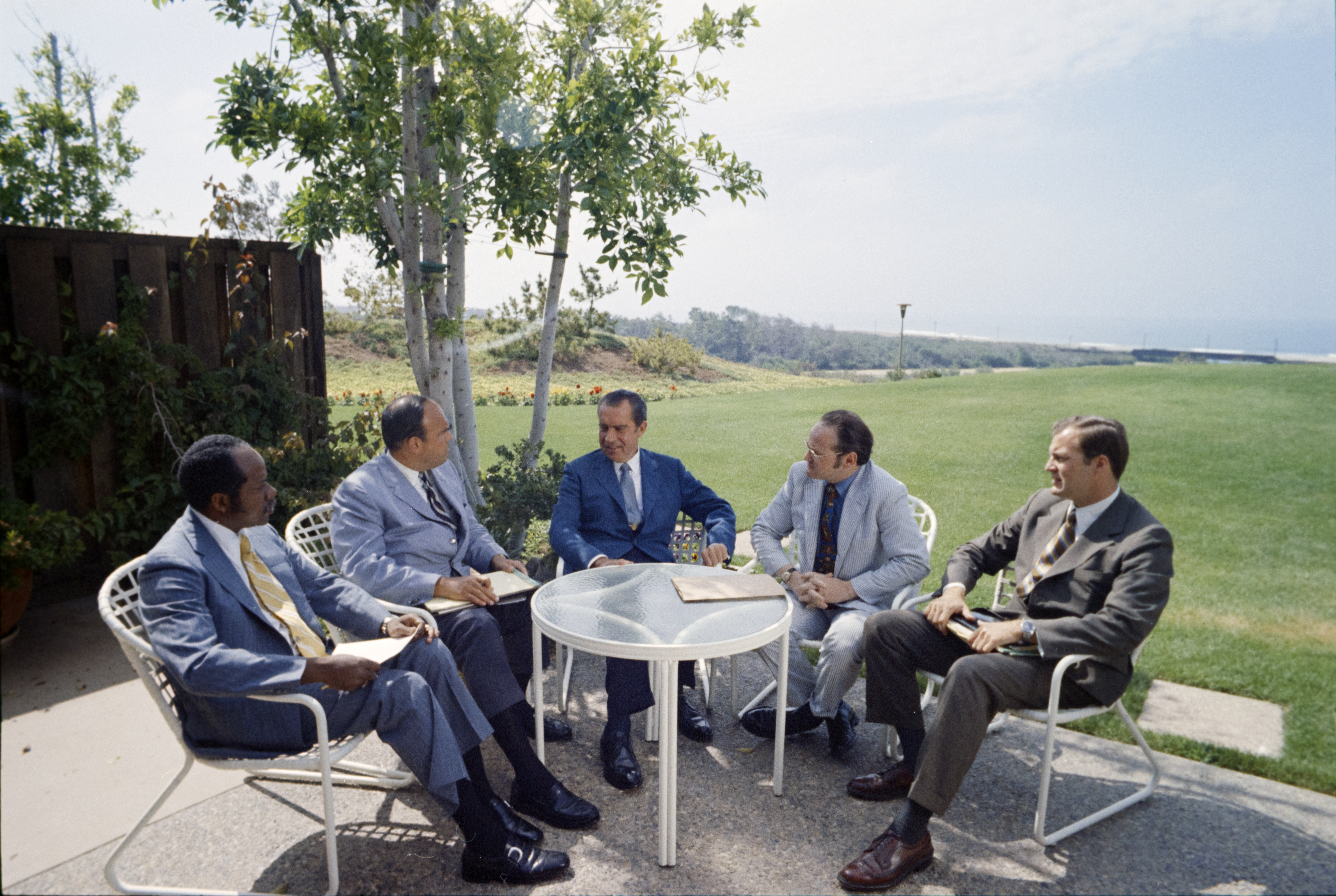
President Nixon confers with his drug treatment officials, at the Western White House in San Clemente, upon their return from South Vietnam (7/17/1971).
(Richard Nixon Presidential Library)
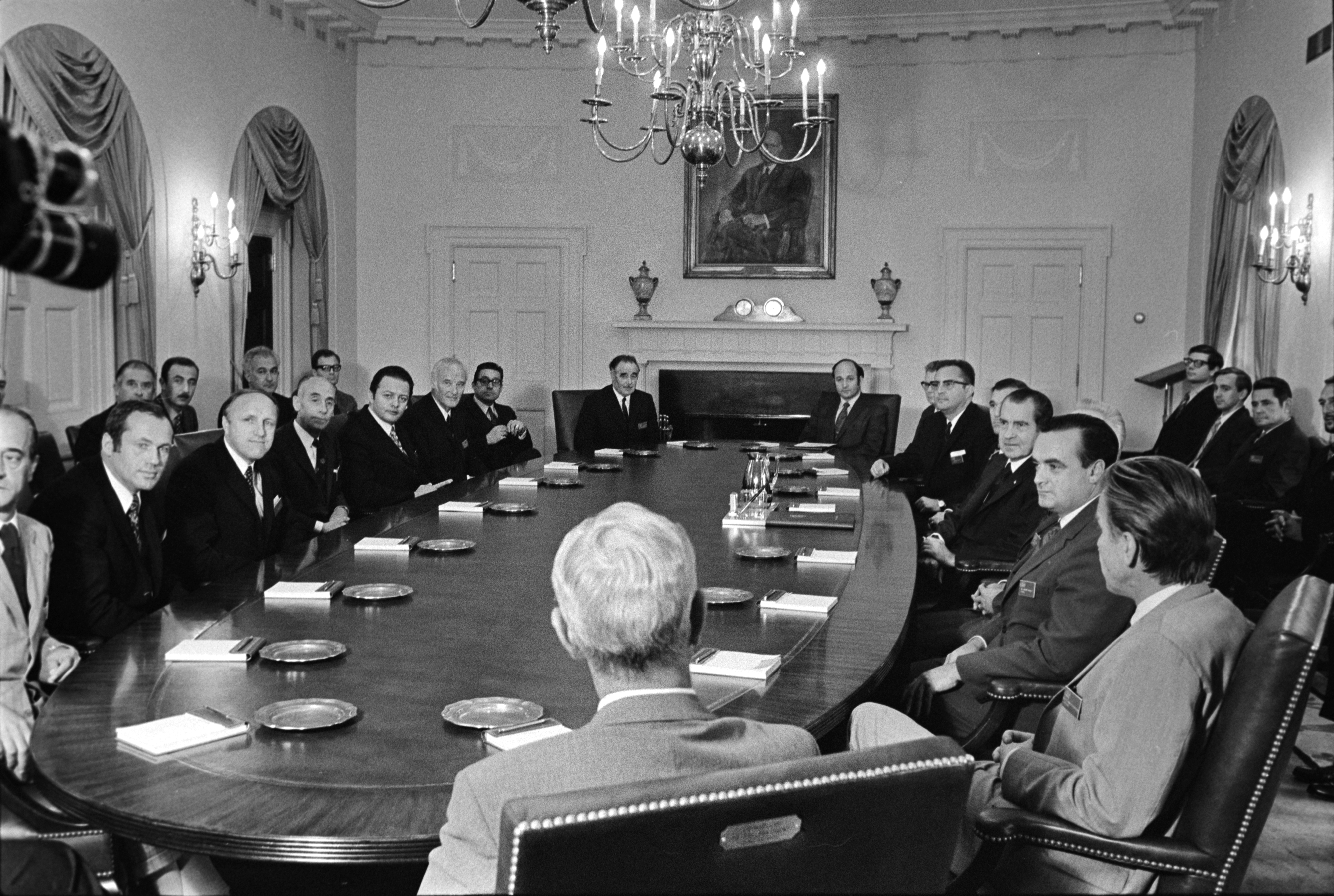
President Nixon meeting with the International Seminar on Illicit Drug Traffic and Abuse (9/21/1971).
(Richard Nixon Presidential Library)
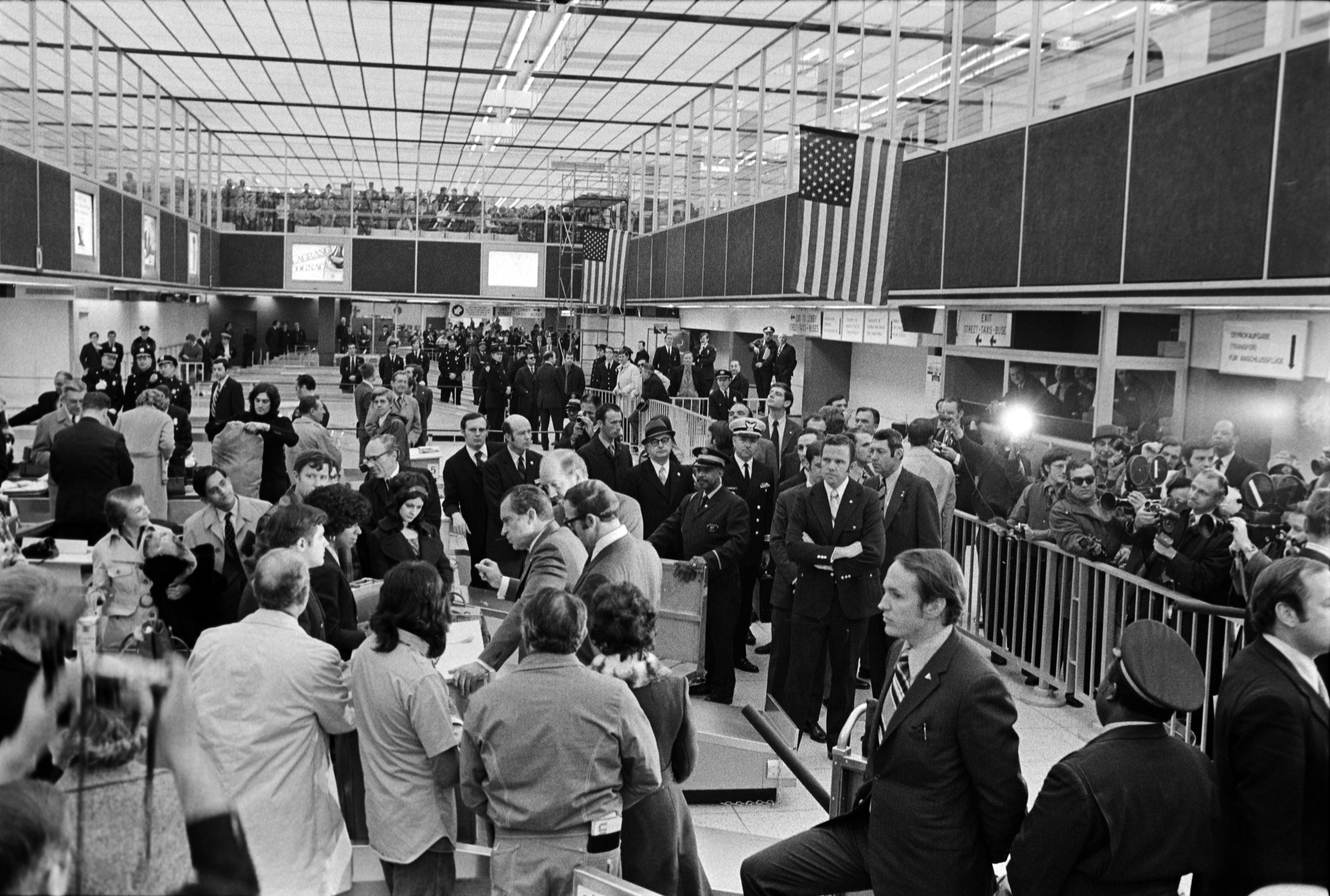
President Nixon and Myles Ambrose, newly appointed Director of ODALE, meeting with Customs officials to review drug detection facilities at Kennedy International Airport in New York City (3/20/1972).
(Richard Nixon Presidential Library)
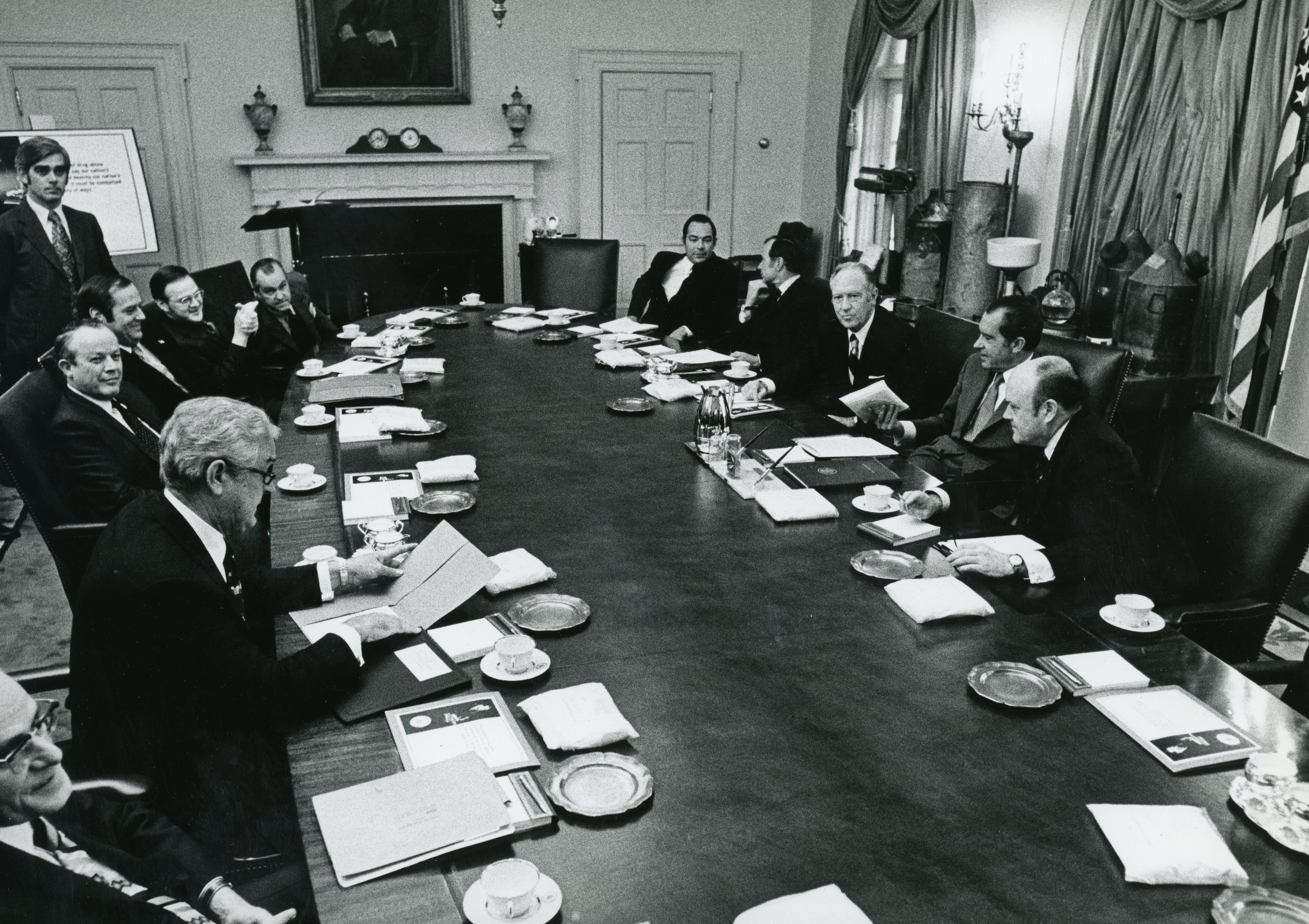
President Nixon joins the Cabinet Committee on International Narcotics Control in the Cabinet Room. Recently seized heroin processing lab and bags of 98% pure heroin are on display (3/20/1972).
(Richard Nixon Presidential Library)
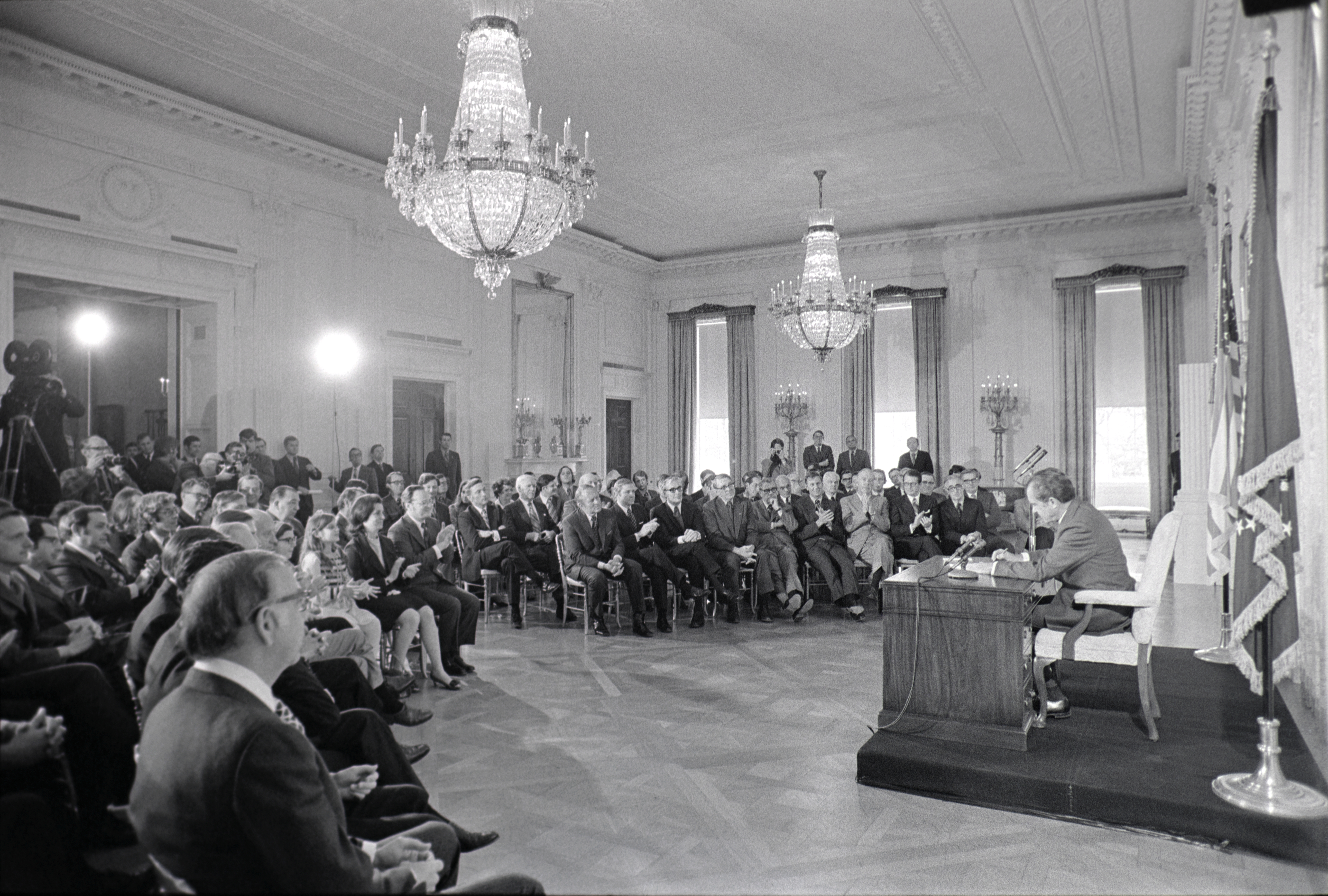
President Nixon signs the Drug Abuse Office and Treatment Act of 1972 in the East Room, which created SAODAP. It passed Congress without a single dissenting vote (3/21/1972).
(Richard Nixon Presidential Library)
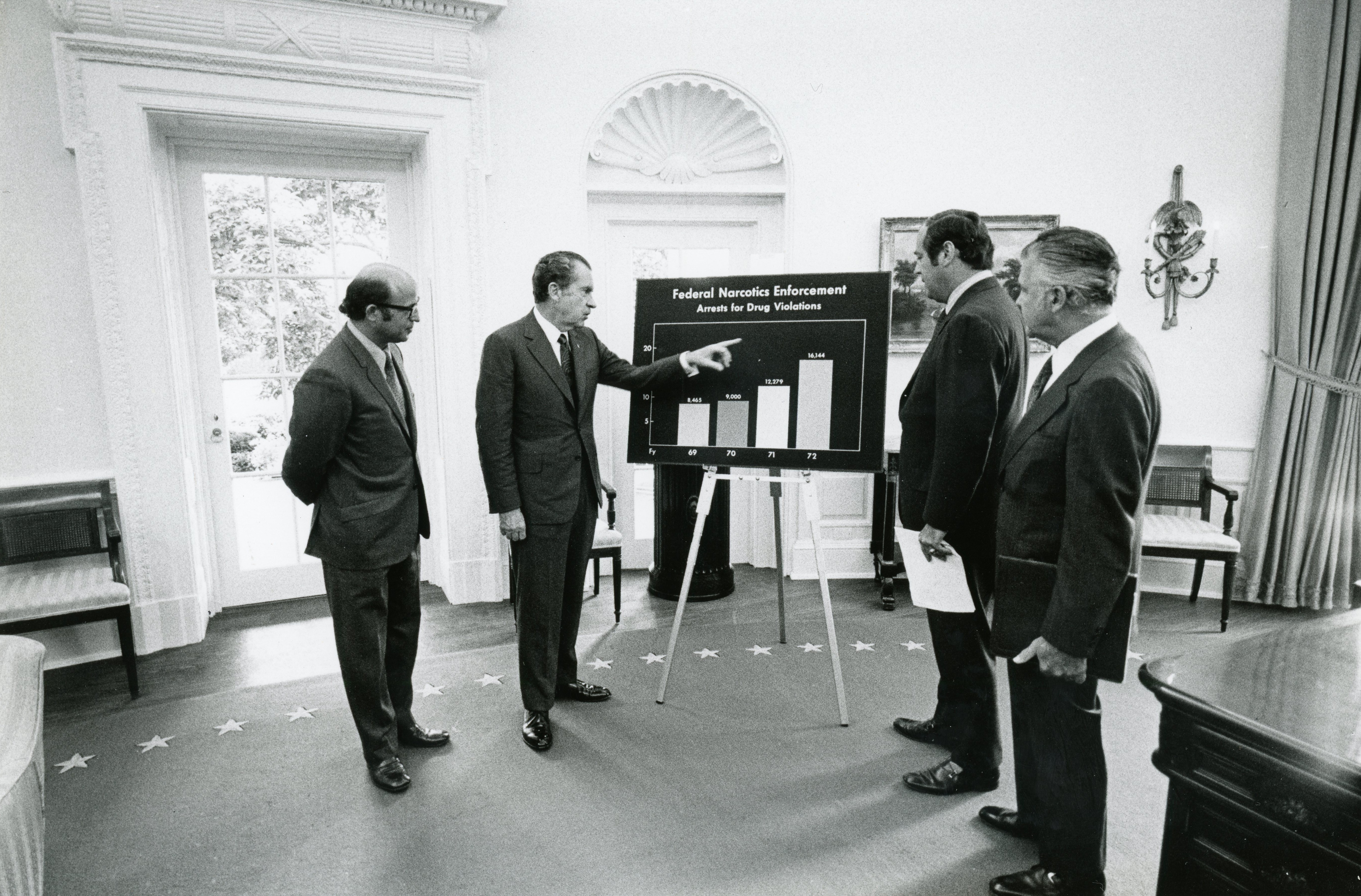
President Nixon in the Oval Office reviewing a chart that displays narcotic arrests statistics with law enforcement officials (7/24/1972).
(Richard Nixon Presidential Library)
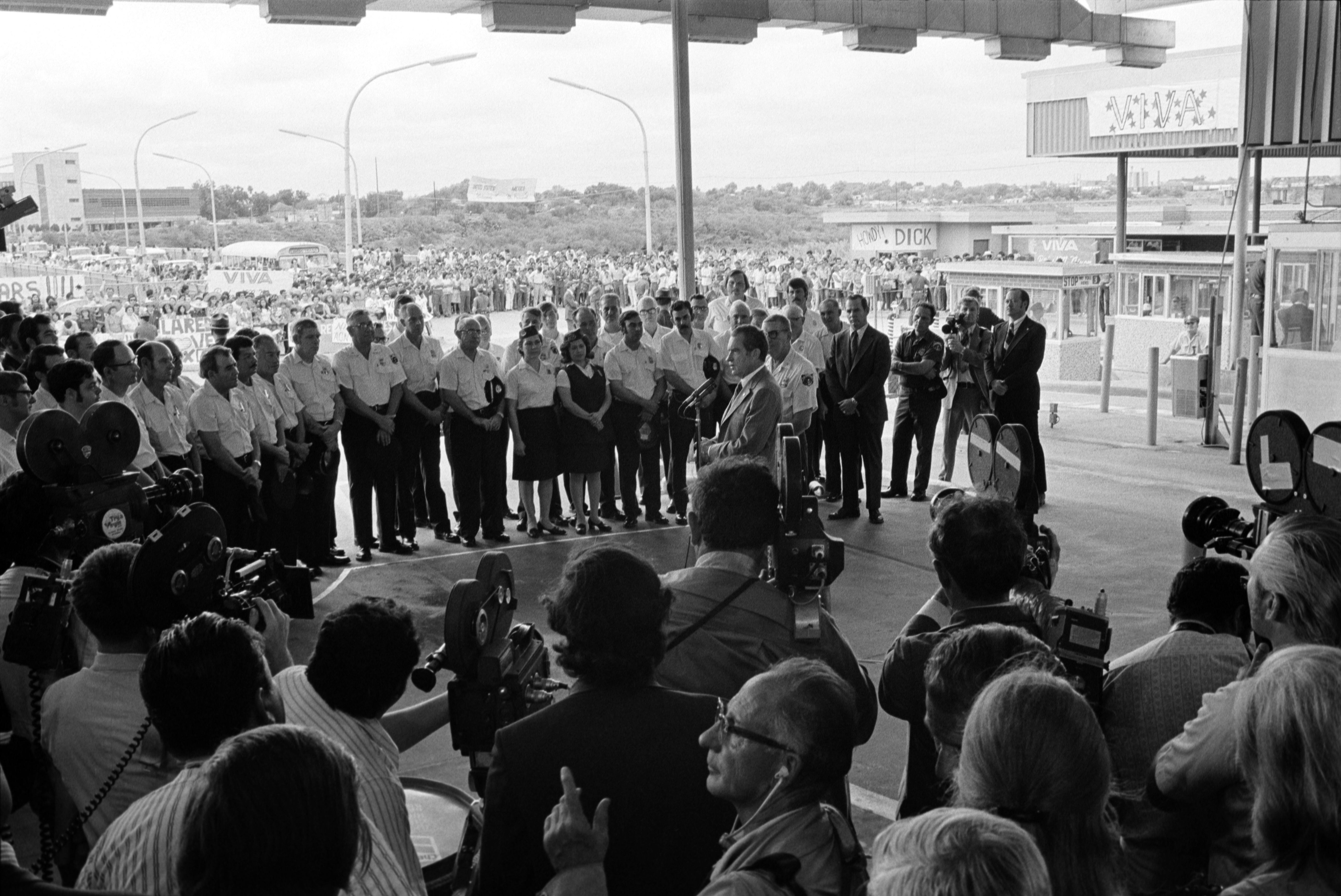
President Nixon addresses Customs agents operating near the U.S.-Mexico border in Laredo, Texas (9/22/1972).
(Richard Nixon Presidential Library)
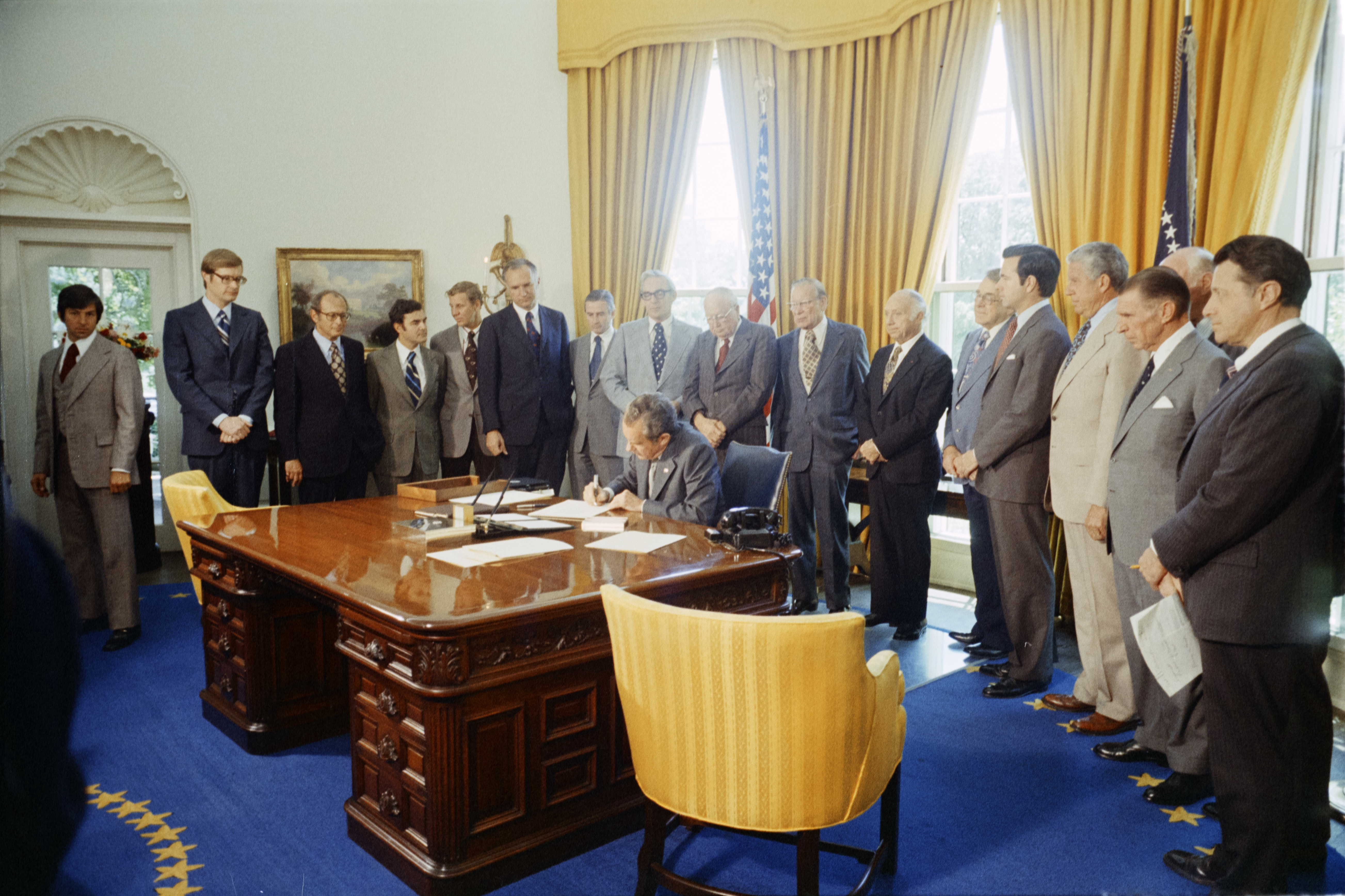
President Nixon signs the Narcotic Addict Treatment Act of 1974 and the Comprehensive Alcohol Abuse and Alcoholism Treatment Act of 1974 in the Oval Office (5/14/1974).
(Richard Nixon Presidential Library)
Additional Sources
Nixon Now Podcast – Michael Massing on Nixon’s Drug Policies
Drug Abuse Prevention Reunion Forum
